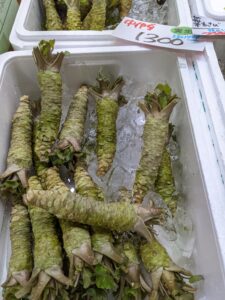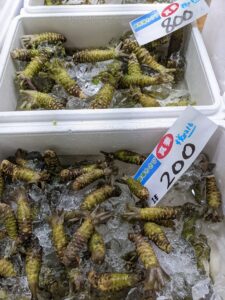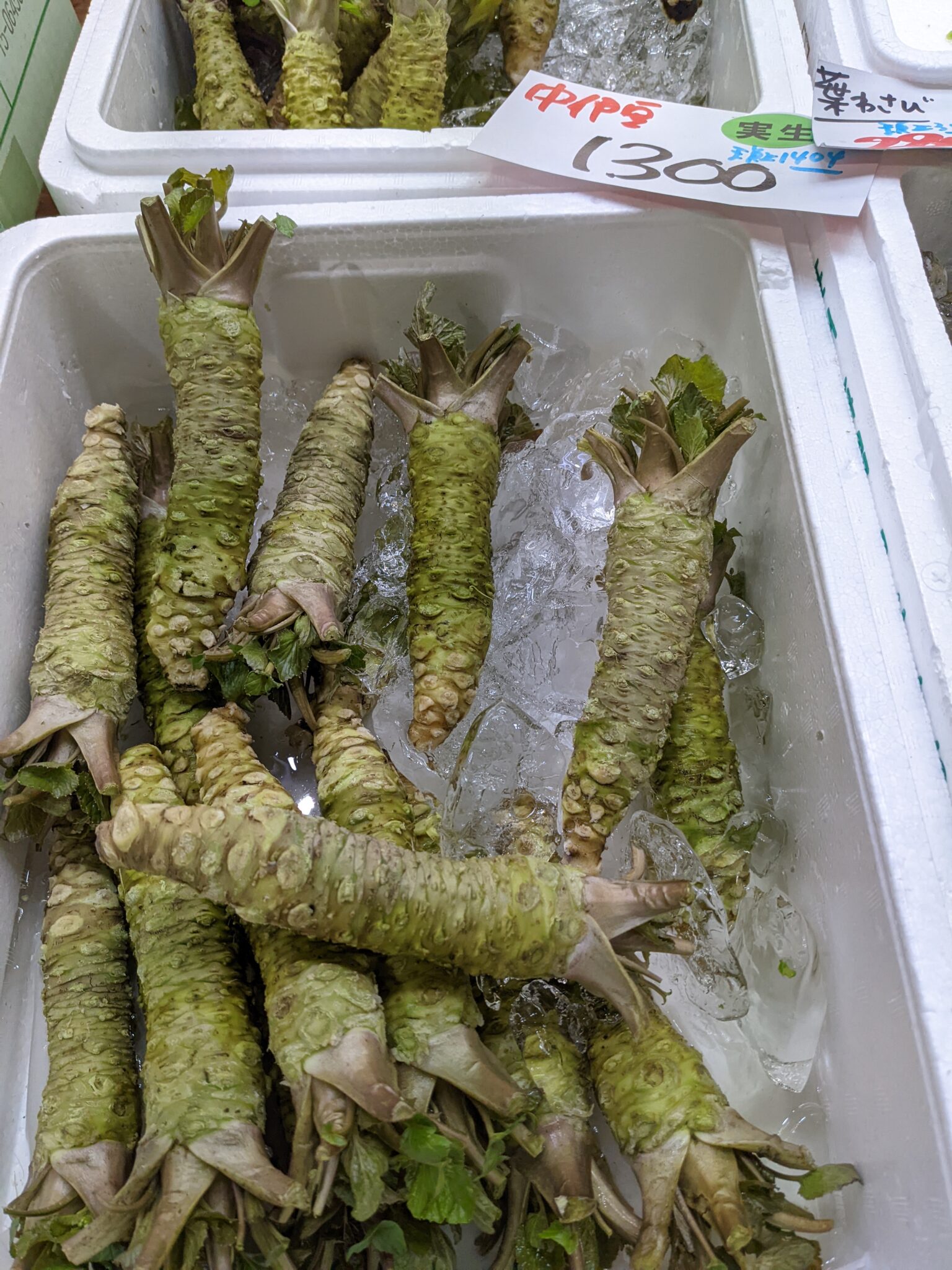WASABI ENDANGERED!!!
The front page of today’s (February 9, 2022) New York Times International Edition featured a story that took up over half the page about Japanese wasabi being endangered, mainly because of environmental factors (“A Fiery Delicacy in Peril”). Native to Japan, wasabi has been eaten for over one-thousand years, not so much as a food but as a condiment with beneficial medicinal properties. Until quite recently, wasabi was grown only in Japan, making it, in my opinion, the most “uniquely” Japanese food there is, something that was only “authentic” (a word I hate to use except in very specific instances, such as here) if it was produced in Japan; everything else was nothing more than grated horseradish root (a biological cousin of wasabi; both are members of the Brassicaceae family, as is mustard) with some sort of green coloring added.
If there are any people anywhere that love Japanese food and also deny that climate change is real, the Times’ article should be a mind changer. The article includes comments from a Shizuoka Prefecture wasabi grower who says rising temperatures have made his wasabi more susceptible to mold and rot, while changes in the local forest ecology have degraded the quality of the spring water the wasabi needs to grow in. More intense rain storms and more frequent and powerful taiphoons also have disrupted wasabi farming.


Healthy wasabi from Shizuoka
<====
Black, diseased wasabi from Shizuoka ====>
The best way to grow wasabi requires clean, flowing water, and lots of it. When grown in water, wasabi is very temperature sensitive, doing best in a very narrow range of temperatures (8 to 18 C, but best when between 12 to 15 C). Below 5C it will freeze, and over 20C, especially over 30 C, it is susceptible funguses and can even rot. In the fifteen years or so I have lived in Japan I have noticed how summer temperatures keep going up, with night-time lows much higher as well. Perhaps this is why wasabi production in Shizuoka has decreased by over 55% over the past ten years, dropping the prefecture from number one in Japan to number three in production (Nagano is now number one, followed by Iwate).
It’s not just climate change that is imperiling wasabi’s survival. Other human activities are also having unintended consequences. Japan needed to rebuild after the war, and to do that much of the country’s forests were cut down for lumber, then later replanted with a mono-culture of Japanese cedar trees (sugi) and Japanese cypress (hinoki). Those forests have now matured and their canopies have closed, blocking the sunlight wasabi plants need to grow (these monoculture forests are also responsible for the pollen that people are allergic to around this time of year). The NY Times article stated that the forestry problem was due to the forests not being cut down, a claim that doesn’t make sense as the trees are for the most part just now reaching the age and size as to be viable for producing lumber; selective thinning of forests would, however, open up spaces for sunlight to come in. As the forests have changed, along with the climate, food supplies for deer and wild boars (inoshishi) have decreased, leading wild animals to forage for food in fields of wasabi, causing damage.
What may ultimately make the situation even worse for the long-term viability of wasabi is demographics and the secretive nature of the industry and the biology of the plant itself. Many of the farmers today are getting old and often do not have sons (or daughters) who will follow in the family business. Commercial wasabi farmers are also for the most part very protective of their craft, very hesitant to share knowledge of how to grow wasabi and even averse to allowing new—and younger—farmers to join the wasabi growers’ association. Most farmed wasabi is grown in beds constantly washed with clean water. Unfortunately, the most recent wasabi bed was built over 200 years ago, so it is unlikely there is knowledge today on how to build new beds.
As the few people outside Japan who have succeeded in growing wasabi commercially can attest, growing wasabi is very difficult and requires patience as well as money to get started. It’s probably not a coincidence that some of the main scientific breakthroughs in growing wasabi have happened outside in Japan, especially in British Columbia and Oregon in North America, as well as in New Zealand, as these farmers/entrepreneurs had to develop their own methods since knowledge of traditional Japanese techniques was for the most part being kept secret (wasabi is now also being grown in North Carolina, Taiwan, and a few other countries, including Iceland, which brands its product as Nordic Wasabi).
Another factor putting the survival of wasabi at risk involves genetics. Wasabi is very difficult to grow from seeds, so almost all commercial wasabi comes from cloning one of two main varieties. This has led to a very limited gene pool for the plant and thus a higher risk of crops being devastated by disease and less able to adapt to a changing environment compared to wilder varieties.
Recently I have noticed the price of large, healthy-looking wasabi to be much higher than in years past. At the same time, there is a lot of small, somewhat deformed or scarred pieces of wasabi on the market for as little as ¥250 or so, much cheaper than I had seen in the past, probably because of a glut of lower quality product. For me the cheaper and smaller wasabi is not a problem and may even be a good thing as I don’t use much fresh wasabi, and when I do I don’t need a lot; a small, finger-size piece of rhizome usually does just fine. But for restaurants, especially sushi shops, small pieces just will not suffice, not when one or two large (10-15 cm long) pieces might be grated for a meal for eight customers.
So what’s the solution? When it comes to what to do regarding rising sea levels the answer is easy: Learn to swim (and move away from coastal areas, build sea walls, etc.). Probably the only thing that will save wasabi is to develop strains that can withstand the new climate and survive pests and diseases, a lengthy and expensive endeavor, if it can even be done.In the meanwhile, enjoy fresh wasabi while you can!
